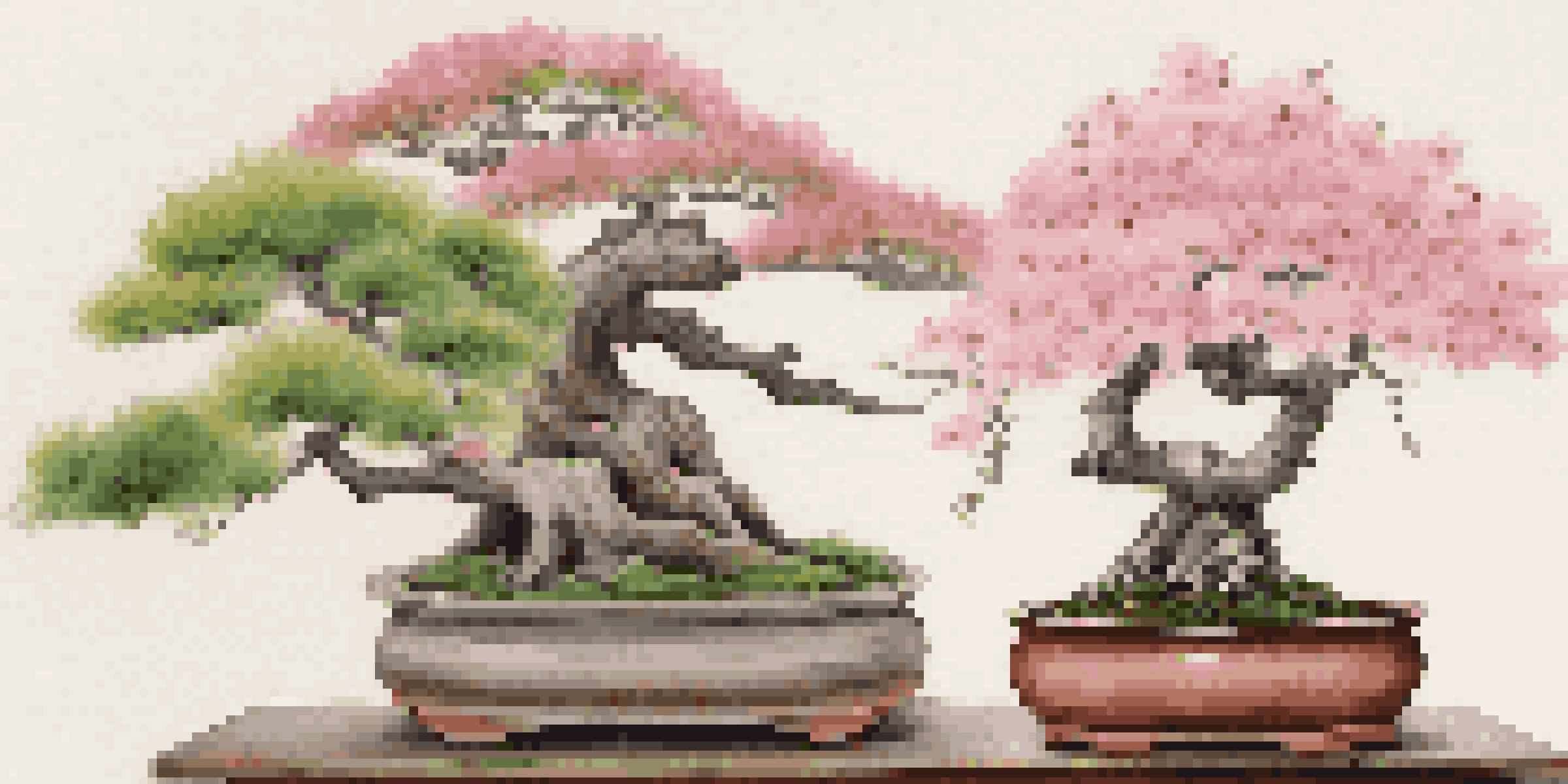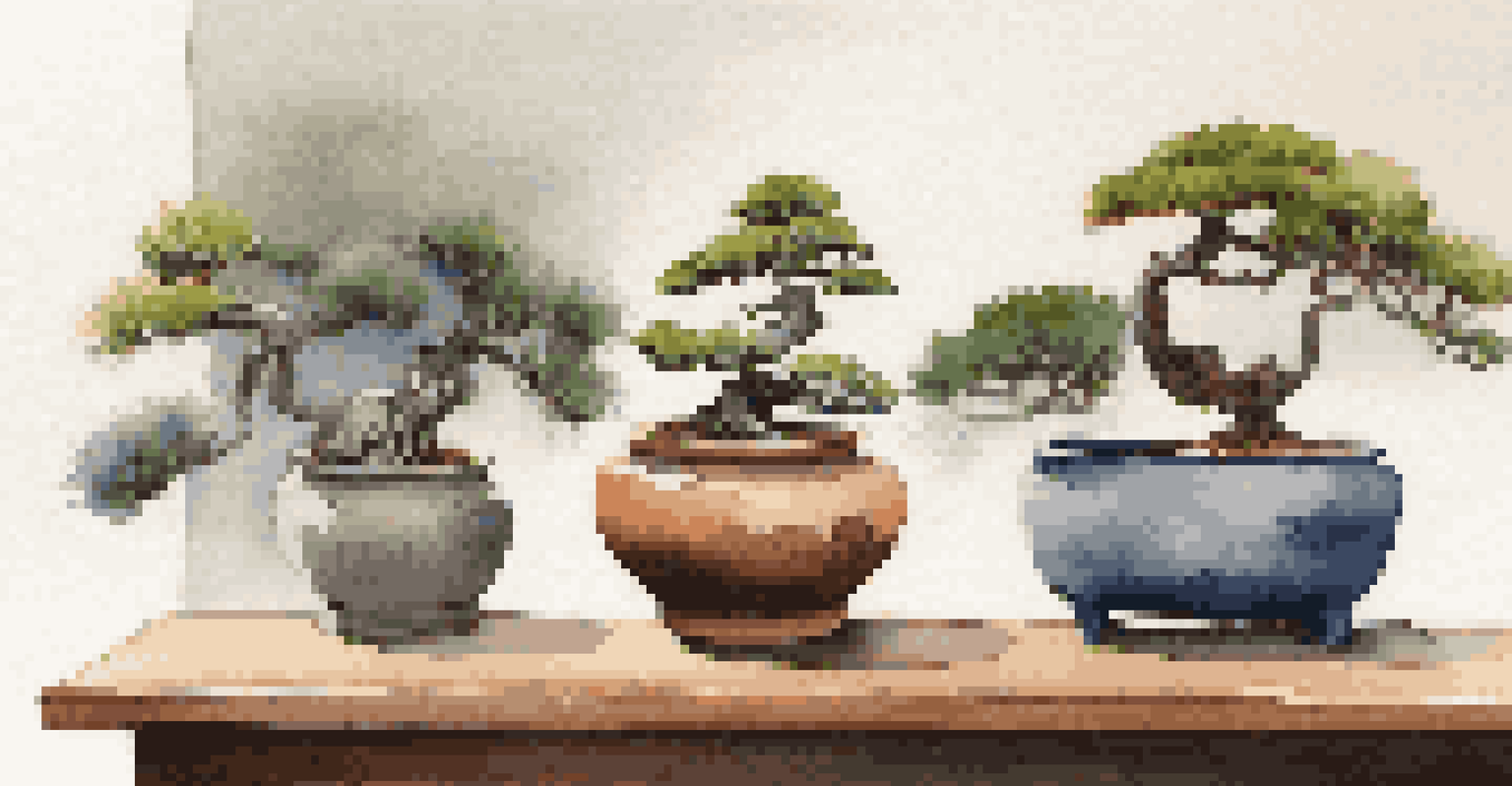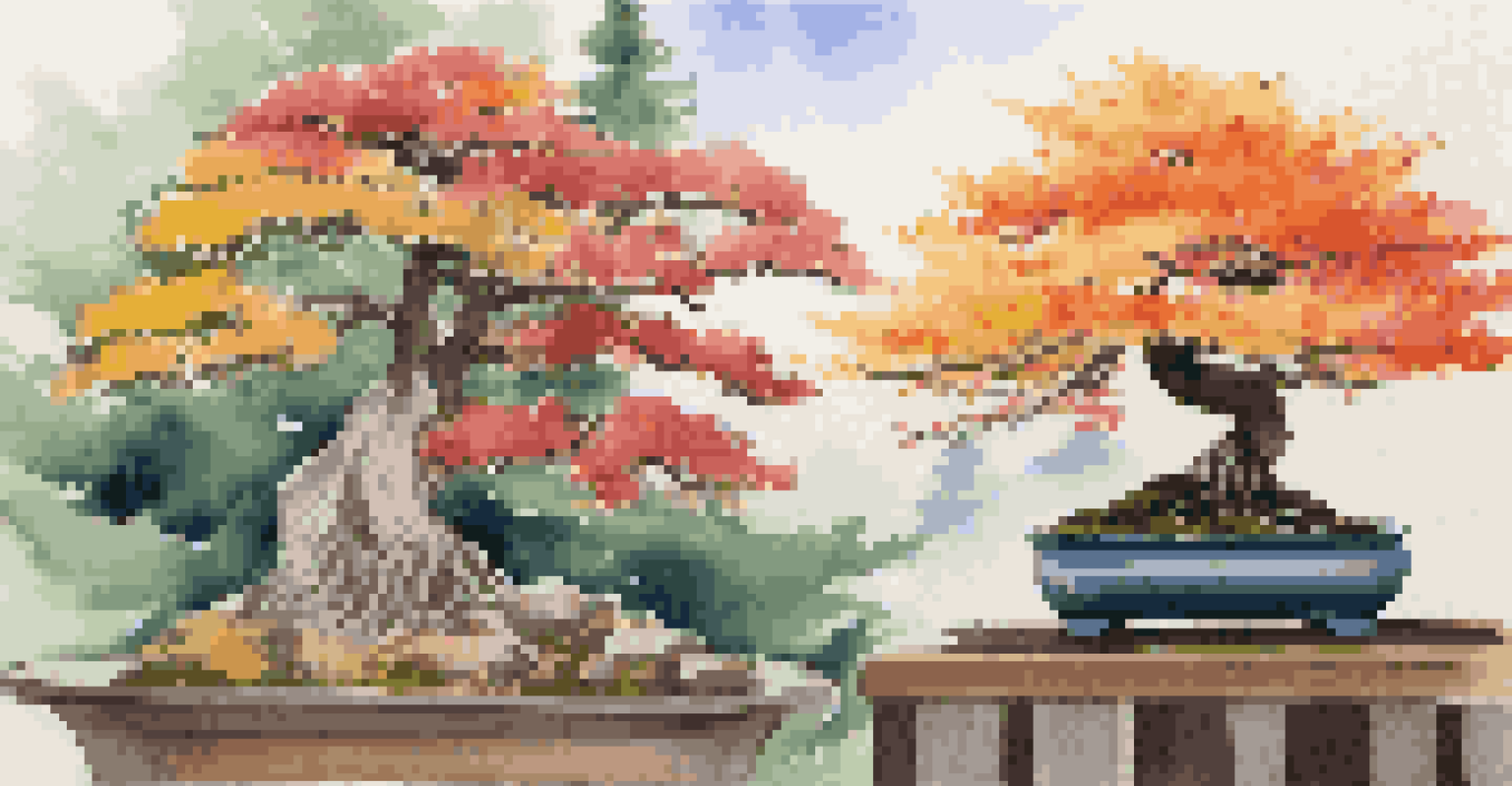Creating a Bonsai Collection: Tips for Diversity and Balance

Understanding the Basics of Bonsai Collection
Before diving into creating a bonsai collection, it's essential to understand what bonsai is. Bonsai is not just a small tree; it's an art form that involves growing trees in miniature. The goal is to create a harmonious representation of nature, encapsulating the beauty of a full-sized tree in a small pot.
The creation of a bonsai is a continuation of nature, a reflection of beauty, and a tribute to the art of patience.
Start by familiarizing yourself with the different bonsai styles, such as formal upright, informal upright, and cascading. Each style has its own aesthetic and care requirements, which can influence how you choose to build your collection. Understanding these basics will help you make informed decisions as you select your trees.
As you begin your journey, consider your personal preferences and the environment in which you'll be caring for your bonsai. This foundation will guide your choices and ensure that your collection reflects both your style and the conditions you can provide.
Choosing the Right Species for Your Collection
Selecting the right species is crucial for a diverse bonsai collection. Each tree species has unique characteristics—some thrive indoors, while others prefer the outdoors. Researching species that can coexist in your climate and environment will lead to a more successful collection.

Consider starting with a mix of conifers, deciduous trees, and flowering species. For example, a juniper offers evergreen beauty, a maple provides stunning fall colors, and a flowering cherry brings seasonal blooms. This variety will not only enhance the visual appeal of your collection but also allow you to experience different growth patterns and care techniques.
Understand Bonsai Basics
Familiarizing yourself with bonsai styles and care requirements is essential for building a harmonious collection.
Additionally, think about the size and shape of each potential species. A well-rounded collection includes trees of varying heights and forms, creating a dynamic aesthetic that draws the eye and sparks interest.
Balancing Aesthetics and Care Requirements
A successful bonsai collection strikes a balance between visual appeal and care requirements. It's tempting to choose trees solely based on looks, but remember that each species comes with its own care needs. Understanding these needs will help you maintain a healthy collection.
Bonsai is not just about growing trees, but about cultivating a deep connection with nature and nurturing an artistic vision.
For instance, some species may require more sunlight or humidity than others. By grouping trees with similar care requirements, you can streamline your maintenance routine and reduce the risk of neglecting any one tree. This approach also allows you to create a more cohesive and harmonious look in your collection.
Moreover, consider the seasonal changes in your trees. A careful selection of species that offer year-round interest will keep your collection vibrant and engaging, regardless of the season.
Incorporating Different Styles for Visual Interest
When creating your bonsai collection, think about incorporating different styles to enhance visual interest. Each style brings its unique flair, and a mix can create a dynamic display. You might choose a traditional style for one tree while opting for a more whimsical style for another.
For example, a cascading bonsai can create a stunning focal point, while a formal upright tree can offer stability and structure. This juxtaposition not only captivates viewers but also showcases your creativity as a bonsai enthusiast.
Choose Species Wisely
Selecting a diverse mix of tree species enhances visual appeal and ensures a thriving bonsai collection.
Additionally, varying the pot shapes and sizes can further enhance the overall presentation of your collection. A well-chosen pot can complement the style of your bonsai and elevate the entire aesthetic.
Creating a Seasonal Display for Year-Round Appeal
A thoughtful bonsai collection considers seasonal changes, ensuring that there's always something to admire throughout the year. Selecting species that bloom or change color in different seasons can keep your collection vibrant and engaging.
For instance, you might have a flowering species that showcases blooms in spring, followed by a deciduous tree that flaunts its autumn colors. This seasonal rotation not only enhances visual interest but also allows you to appreciate the full life cycle of your trees.
Moreover, consider the placement of your bonsai. Positioning them where they can be easily viewed through windows or in outdoor spaces will allow you to enjoy their beauty no matter the season.
Mixing Pot Styles for a Unique Presentation
The pots you choose for your bonsai are just as important as the trees themselves. Mixing different pot styles can create a unique presentation that reflects your personality and enhances the visual appeal of your collection. Consider using a variety of materials, colors, and shapes to add depth.
For example, a rustic ceramic pot might complement the natural beauty of a juniper, while a sleek, modern pot could enhance a minimalist style bonsai. This variety not only showcases your creativity but also allows each tree to shine in its own way.
Regular Maintenance is Key
Consistent care, including pruning and watering, is crucial for maintaining the health and beauty of your bonsai.
When selecting pots, also think about the size and drainage capabilities. A well-draining pot is vital for the health of your bonsai, while the right size will ensure that your tree has enough space to grow.
Regular Maintenance: The Key to a Thriving Collection
Creating a bonsai collection is just the beginning; regular maintenance is essential for keeping your trees healthy and beautiful. This includes tasks like pruning, watering, and repotting, which can vary depending on the species and the season.
Pruning is particularly important for shaping your bonsai and encouraging healthy growth. By regularly trimming back new growth, you help maintain the tree's shape and promote denser foliage. This process can be both an art and a science, allowing you to express your creativity.

Additionally, keeping a care schedule for each tree can help you stay organized. Knowing when to water, fertilize, or repot each species will ensure that your entire collection thrives and continues to bring you joy.